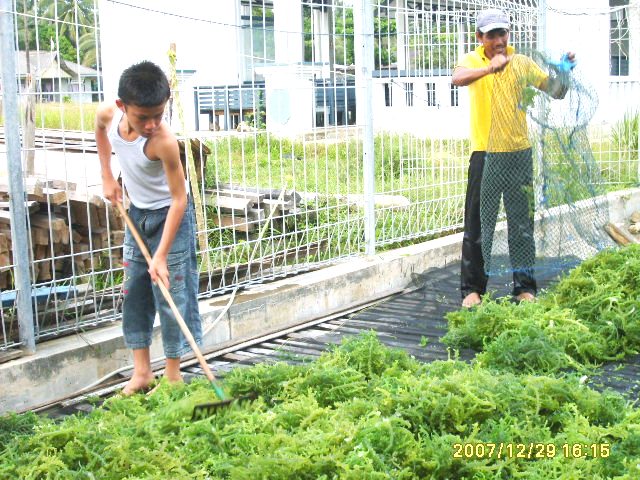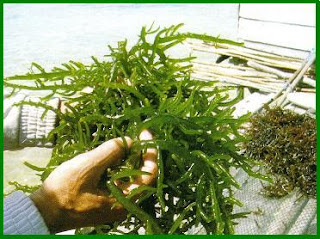Benefit of Seaweed Cultivation
1. Gelatin
Society in general knows that - so in the form of flour normally used for making pudding. But people do not know exactly what order - in order for it. Order - order is sulfanik acid esters of galakto which is linear and is obtained by extracting the algae species Agarophytae. Order - order is soluble in hot water in nature and does not dissolve in cold water.
Now is the use of so - so the more developed, which used just for food alone is currently being used in textiles, cosmetics, and others - others. Its main function is as pemantap materials, and author of the emulsion, thickening, filler, and gel-making materials. In the industry, so - so widely used in industry for the manufacture of foods such as breads, soups, sauces, ice cream, jelly, candy, sherbet, cheese, pudding, jam, beer, wine, coffee, and chocolate. In the pharmaceutical industry is useful as a laxative or laxative, wrapping the capsule, and mix ingredients printer tooth samples. In the textile industry can be used to protect the sheen of silk. In the cosmetics industry, in order - so useful in the manufacture of ointments, creams, lotions, lipstick and soap. In addition there are many other benefits from the agar - agar, as for the manufacture of film plates, toothpaste, shoe polish, paper, and canning of fish and meat.
2. Ragin

Ragin is a polysaccharide compound composed of units of D-galactose and L-galactose 3.6 anhidrogalaktosa linked by ties 1-4 glikosilik. Cash characteristics of each unit galaktosanya keraginan is binding cluster of sulfate, total sulfatnya approximately 35.1%.
Ragin almost the same functionality with gelatin, such as a stabilizer, thickener, gel-forming, and pengemulsi. Ragin widely used in food industry for making cakes, bread, makroni, hours, jelly, juice, beer, ice cream, and gel coatings of meat products. In the pharmaceutical industry widely used for toothpaste and drugs - drugs. But they can also be used in textiles, cosmetics and paints.
3. Algin (Alginate)

Algin is derived from brown seaweed algae species. This is a polymer of algin uronat acids that are arranged in the form of long linear chains. Form of algin on the market are often found in the form of starch sodium, potassium or ammonium alginate is soluble in water.
Algin usability in the industry is as a thickening, stabilizer, pengemulsi, and forming a thin layer of oil-resistant. Algin used in many industries in the food industry for the manufacture of ice cream, sherbet, ice milk, bread, cakes, sweets, butter, sauces, meat canning, jam, syrup and pudding. In the pharmaceutical industry widely used for the tablets, ointments, capsules, patches, and filters. Cosmetic industry for the cream, lotion, shampoo, hair dye,. And in other industries such as textiles, paper, photography, insecticides, pesticides, and wood preservatives.


























